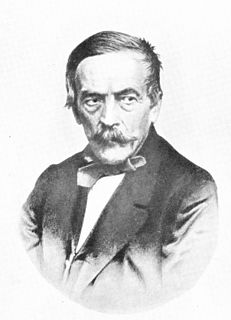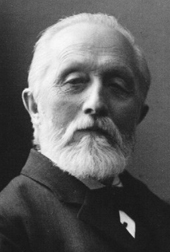
Paragus is a genus of hoverflies.

Dragon Ball Z: Broly – The Legendary Super Saiyan, known in Japan as Dragon Ball Z: Burn!! Hot Battle - Fierce Battle - Super Fierce Battle or by Toei's own English title Dragon Ball Z: The Burning Battles, is a 1993 Japanese anime science fiction martial arts film and the eighth Dragon Ball Z feature movie. The original release date in Japan was on March 6, 1993 at the Toei Anime Fair alongside Dr. Slump and Arale-chan: N-cha! Clear Skies Over Penguin Village. It was dubbed into English and released by Funimation in 2003.

Johann Wilhelm Meigen was a German entomologist famous for his pioneering work on Diptera.

Dr Gottlieb August Wilhelm Herrich-Schäffer was a German entomologist and physician. He was born, and died, in Regensburg. Herrich-Schäffer studied and collected particularly butterflies and moths (Lepidoptera). He was chairman of the Regensburg Botanical Society from 1861 to 1871, and was awarded an honorary citizenship of Regensburg in 1871.

Karl Moritz Schumann was a German botanist.

Theodor Becker was a Danish-born German civil engineer and entomologist primarily known for studies on the taxonomy of flies.
Johann Heinrich Gottlob von Justi was one of the leading German political economists in the 18th century.

Broly is a fictional character in the Dragon Ball series.

Johann Hieronymus Chemnitz was a German clergyman and a conchologist. From 1759 to 1768 he was Chaplain of the Danish Embassy in Vienna, then garrison Chaplain in Helsingør and Copenhagen.

Ludwig Karl Georg Pfeiffer, also known as Louis Pfeiffer, was a German physician, botanist and conchologist.
Johann Dietrich Alfken was a German entomologist who specialised in Hymenoptera especially Apoidea.
Systematic musicology is an umbrella term, used mainly in Central Europe, for several subdisciplines and paradigms of musicology. "Systematic musicology has traditionally been conceived of as an interdisciplinary science, whose aim it is to explore the foundations of music from different points of view, such as acoustics, physiology, psychology, anthropology, music theory, sociology, and aesthetics." The most important subdisciplines today are music psychology, sociomusicology, philosophy of music, music acoustics, cognitive neuroscience of music, and the computer sciences of music. These subdisciplines and paradigms tend to address questions about music in general, rather than specific manifestations of music. In the Springer Handbook of Systematic Musicology "(the) sections follow the main topics in the field, Musical Acoustics, Signal Processing, Music Psychology, Psychophysics/Psychoacoustics and Music Ethnology while also taking recent research trends into consideration, like Embodied Music Cognition and Media Applications. Other topics, like Music Theory or Philosophy of Music are incorporated in the respective sections."
Ludwig Beissner was a German horticulturalist and dendrologist born in Ludwigslust, Mecklenburg-Schwerin.
Papyrus 68, designated by 68, is a copy of the New Testament in Greek. It is a papyrus manuscript of the First Epistle to the Corinthians. The surviving texts of 1 Corinthians are verses 4:12-17; 4:19-5:3. The manuscript palaeographically has been assigned to the 7th century.
Kurt Treu, was a German classical philologist. He was born the son of a German parson on the island Saaremaa, the largest island of Estonia. In 1940, because of World War II, the Treu family was forced to leave their homeland. Kurt Treu studied in a Gymnasium in Hohensalza. AS levels were studied by him after the war. He studied Classical philology at the University of Jena. In 1963 he graduated from the Humboldt University of Berlin.
Hans Sydow was a German mycologist and the son of Paul Sydow (1851–1925).

Heinrich Conrad Weinkauff (1817–1886) was a German zoologist and malacologist. Weinkauff described many new species.
The Cremifaniidae are a very small family of acalyptrate flies with only 4 described species worldwide. All species are considered rare, and nothing is known of their life history. They were formerly placed in the family Chamaemyiidae.

Bicyrtes quadrifasciatus, the four-banded stink bug hunter wasp, is a species of sand wasp in the family Crabronidae. It is found in North America.
Paragus angustifrons is a species of syrphid fly in the family Syrphidae.











